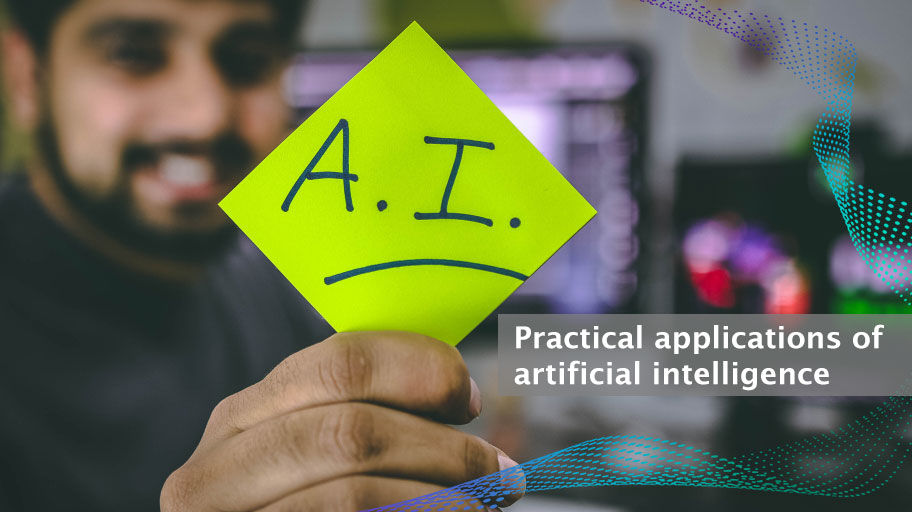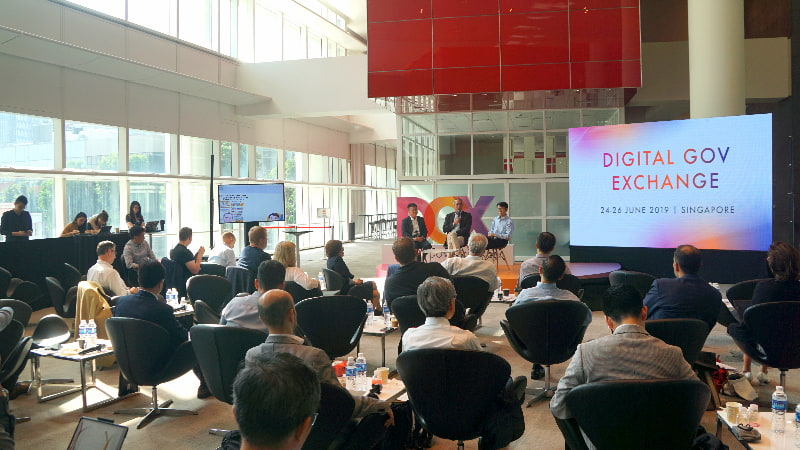Practical applications of artificial intelligence

From social insurance transactions to municipal services, experts from China and Sweden discussed practical use cases for AI on the first day of GovTech’s Digital Government Exchange 2019.
A city is like a living, breathing creature—steel and concrete buildings make up its bones, transportation networks comprise its circulatory system, and people are its muscles, making things happen. While the ‘bodies’ of cities may be well-formed, their brains are arguably just maturing as governments around the world start deploying artificial intelligence (AI) in meaningful ways to create value for citizens and businesses.
At the fourth Digital Government Exchange, organised by the Government Technology Agency of Singapore from 24-25 June 2019, experts gathered to discuss practical use cases for AI. Mr Leong Der Yao, director of the data science and AI division at GovTech, moderated the session, which included Mr Lu Yong, vice president of Shanghai Data Exchange, and Dr Magnus Enzell, deputy director of the Ministry of Finance, Sweden, as panellists.
“AI is just a tool in our toolbox. What we need to decide is: Where is AI best applied?” Dr Enzell remarked.

Fit-for-purpose AI
Contrary to popular sentiment, AI is not a homogenous technology nor a magic bullet for all problems. Rather, Dr Enzell noted that AI is an umbrella term encompassing innovations in the fields of natural language processing, machine translation, image and graph analytics, visualisation, and much more. Hence, matching the appropriate technological capability with the right use case is critical.
In China, Mr Lu noted how AI and sensors had great potential to transform municipal services, such as waste disposal. Unlike in the past, where the removal of rubbish in trash bins was carried out at fixed intervals, sensors can now send an alert to the relevant agency when a trash bin is nearing maximum capacity. At the same time, AI is applied to analyse data on disposal patterns for predictive waste clearance. “By doing this, we can better manage the hygiene level of an area,” said Mr Lu, adding that a similar approach can be taken with predictive maintenance of elevators.
Deciding with data
Both panellists agreed that the foundation for developing practical AI applications lies in the ability to collect and integrate data. Dr Enzell highlighted the need for standards for data classification and rules or guidelines surrounding data security.
Visualisation of data, once it has been analysed by AI, is just as important, said Mr Lu. He showed how the command centre of the Jing’an district in Shanghai, China, has an integrated interface that displays event assessment and analysis reports as well as real-time information about the goings-on in the city. Importantly, this information can be overlaid onto an accurate geospatial map, giving authorities a bird’s-eye view of city management while allowing them to zoom in on specific details as and when it is necessary.
Given the promise of AI-assisted decision making, some delegates in the audience wondered if there was a better way to measure the impact that AI systems are having when applied to digital governance. Dr Enzell mentioned that measuring the impact of each individual AI use case is a helpful first step. for example, one might register a reduction in the time taken to complete a transaction online after the implementation of an AI solution.
Clearly, finding practical use cases for AI is just the beginning, and more in-depth research and discussion are needed to fully understand how to realise the full potential of AI while avoiding its perils.

